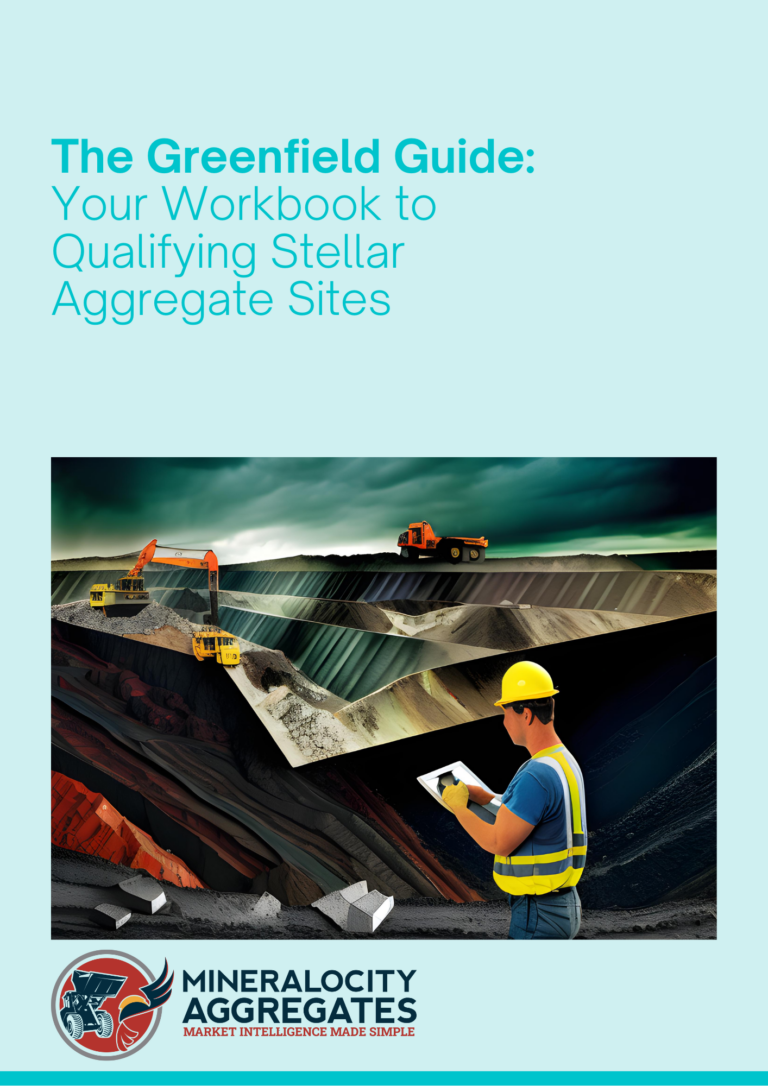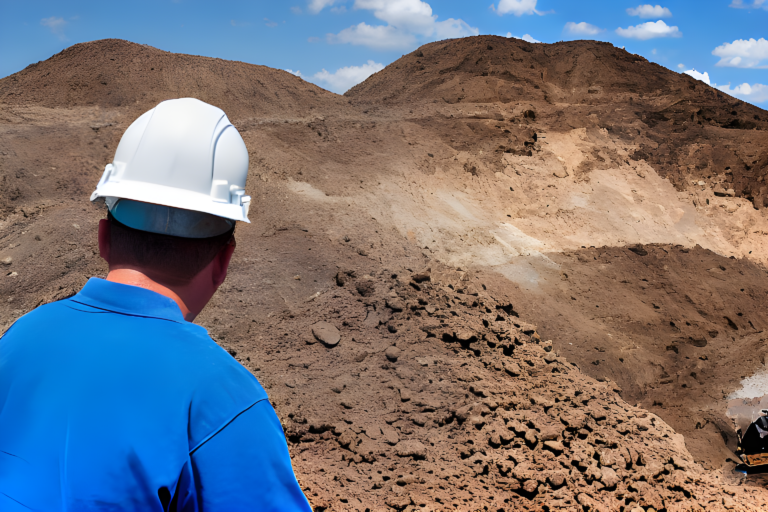For those in the aggregate industry, the term “overburden” refers to the naturally occurring material that lies above the area of interest. While the valuable aggregates are the primary focus of any mining operation, overburden management is a critical aspect that often demands a significant portion of an operation’s budget and attention.
According to a study by the U.S. Bureau of Mines, the average cost of overburden removal in the United States is $1.50 per cubic yard. These costs can fluctuate based on factors like the type of overburden, the mining equipment used, and the mine’s location. Over the lifespan of a mining operation, these costs can stack up significantly, making efficient and cost-effective overburden management essential.
While it’s a component that doesn’t directly generate revenue – being unsellable in its natural state – overburden can, if managed correctly, be transformed from a cumbersome expense to an opportunity. In this article, we’ll delve into the true cost of overburden, its impact on operations, and strategies to turn this challenge into a potential advantage.
What is Overburden?
Overburden refers to the layers of soil, sediment, and rock that overlay the mineral deposit of interest. Removing it is essential to access the aggregates, but the process can be time-consuming, expensive, and even environmentally challenging.
The Cost of Overburden
Overburden, while a universal aspect of aggregate operations, is not uniform. It can vary dramatically from one site to another, ranging from just a few feet in depth to layers that span dozens of feet. The variation in overburden depth and type can have significant implications for a project’s cost and timeline.
Operational Costs: The act of removing overburden is resource-intensive. Physically moving it requires machinery, fuel, and labor. The thicker the overburden layer, the higher the cost of excavation. Additionally, sites with extensive overburden depths might require more specialized equipment and techniques, further driving up expenses.
- Storage Issues: The management doesn’t end once overburden is removed. Handling vast quantities of soil and rock necessitates adequate storage solutions. Once excavated, the overburden must be stored, typically in designated waste dumps. Alternatively, it can be integrated back into the landscape as part of a reclamation strategy, though this comes with its own set of challenges and costs.
- Environmental and Regulatory Impacts: Overburden displacement can have a multitude of environmental repercussions. The exposed earth can affect local ecosystems, waterways, and the surrounding landscape. Beyond the immediate environmental concerns, there’s also a regulatory dimension. Incorrect handling can lead to violations of environmental laws and standards, leading to hefty fines and, in extreme cases, halts in operation.
- Site-Specific Challenges: Given that overburden depth and composition can vary significantly from one location to another, operations often face unique challenges tied to their specific site. Some regions might have rocky, hard-to-move overburden, while others could be dealing with water-logged soils. Each scenario requires its own set of strategies, equipment, and often, a different cost framework.
By understanding the intricacies and potential costs associated with overburden in a specific site, operators can develop a more effective and cost-efficient strategy to manage it.
Strategies for Managing Overburden
- Advance Planning: One of the most effective strategies for managing overburden is to plan in advance. This involves mapping the depth and extent of overburden layers before excavation starts. Geological surveys, topographic maps, and core drilling can provide insights into the volume and type of overburden you’ll encounter. By assessing this, you can allocate resources efficiently, deciding in advance where to deposit the removed material and how to handle it.
- Overburden Storage and Stockpiling: Temporary storage sites, often called stockpiles, can be used to store overburden. These designated areas allow for easy access to the overburden for future use, such as backfilling. It’s essential to design these stockpiles efficiently, ensuring they don’t interfere with the main mining operation or cause any environmental damage.
- Overburden Reprocessing: Modern techniques now allow for the reprocessing of certain types of overburden to extract minerals that were previously deemed uneconomical. For instance, advanced screening and washing processes can help retrieve fine aggregates from the overburden, turning potential waste into a sellable product.
- Land Reclamation: In many jurisdictions, there’s a regulatory mandate to return mined land to a natural or economically usable state. Strategically using overburden for this purpose not only ensures compliance with regulations but also helps in fostering good community relations. The removed overburden can be used to fill voids, contour the landscape, and support the growth of vegetation.
- Outsourcing Overburden Removal: Some companies choose to outsource the removal and management of overburden to specialized firms. These firms often have the expertise and equipment necessary to handle overburden efficiently, potentially reducing the cost and hassle for the primary mining operation.
Conclusion
Managing overburden effectively demands a blend of on-the-ground experience and data-driven insights. Platforms like Mineralocity Aggregates offer comprehensive tools that can assist operations in understanding underlying geology of potential greenfield sites, while companies like Burgex Mining Consultants can assist with predicting removal costs, mine planning, and strategizing the handling of overburden. By incorporating modern technology into traditional practices, aggregate operations can transition from merely managing overburden to masterfully manipulating it for maximum benefit.
Overburden management is, undeniably, a challenge. Still, with the right strategies and tools in place, what once was a costly and cumbersome process can be streamlined and even monetized. Remember: every ton of overburden stands atop valuable aggregate. By refining your approach to this unsellable material, you ensure a smoother, more profitable pathway to the riches below.

Ready to Unlock the Secrets of Successful Greenfield Site Evaluation?
Dive deeper into the world of construction aggregate production with our exclusive Greenfield Guide. Whether you’re a seasoned expert or just embarking on your aggregate adventure, this guide is your roadmap to identifying prime locations, assessing supply potential, and capturing significant market shares. Arm yourself with proven strategies, actionable insights, and essential formulas designed to propel your projects to unparalleled success. Don’t miss this chance to elevate your greenfield endeavors – grab your free copy of the Greenfield Guide now!


